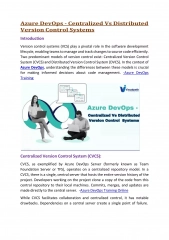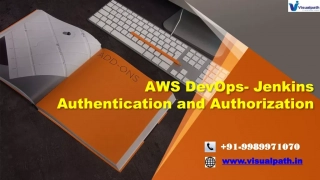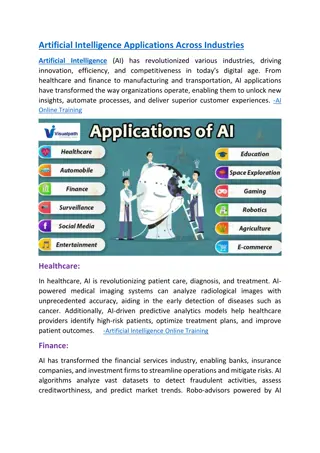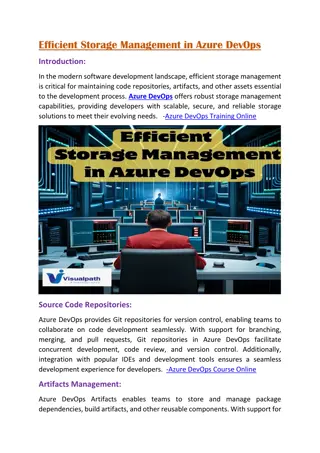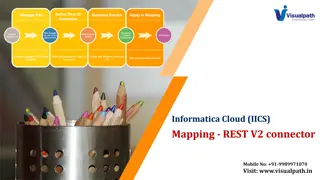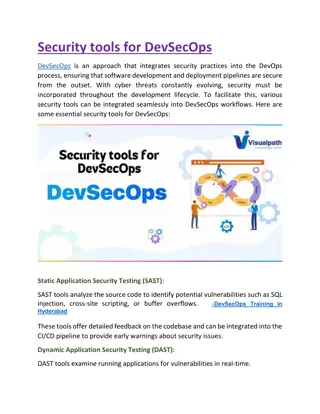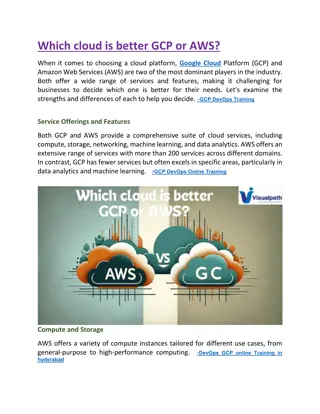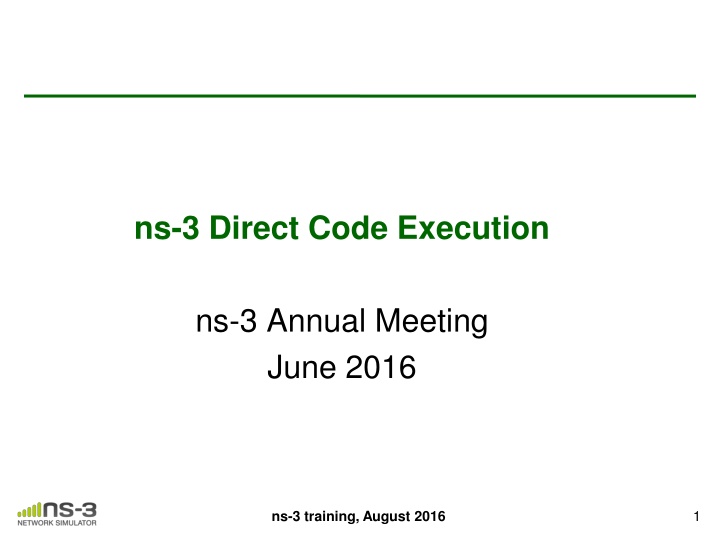
Enhancing Network Experiments with Direct Code Execution in ns-3
Explore the benefits, goals, and modes of Direct Code Execution (DCE) within the ns-3 framework, enabling lightweight virtualization of processes and network simulation for realistic controlled topologies. Learn about DCE modes, development credits, and references for further insights.
Download Presentation

Please find below an Image/Link to download the presentation.
The content on the website is provided AS IS for your information and personal use only. It may not be sold, licensed, or shared on other websites without obtaining consent from the author. If you encounter any issues during the download, it is possible that the publisher has removed the file from their server.
You are allowed to download the files provided on this website for personal or commercial use, subject to the condition that they are used lawfully. All files are the property of their respective owners.
The content on the website is provided AS IS for your information and personal use only. It may not be sold, licensed, or shared on other websites without obtaining consent from the author.
E N D
Presentation Transcript
ns-3 Direct Code Execution ns-3 Annual Meeting June 2016 1 ns-3 training, August 2016
Credits DCE originated with Mathieu Lacage (INRIA), was substantially developed by Emilio Mancini and Frederic Urbani (INRIA), and finished off by Hajime Tazaki DCE leverages the bake build system substantially developed by Daniel Camara (INRIA) DCE is presently maintained by Hajime Tazaki and Matthieu Coudron. 2 ns-3 training, August 2016
Outline High-level overview of DCE Bake build system Example: ns-allinone-3.25 via Bake DCE examples: iperf thttpd Quagga ospfd Q&A 3 ns-3 training, August 2016
Goals Lightweight virtualization of kernel and application processes, interconnected by simulated networks Benefits: Implementation realism in controlled topologies or wireless environments Model availability Debugging a whole network within a single process Limitations: Not as scalable as pure simulation Tracing more limited Configuration different C or C++ applications only 4 ns-3 training, August 2016
Direct Code Execution DCE/ns-3 framework requires the virtualization of a series of services Multiple isolated instances of the same protocol on the same machine System calls are captured and treated by DCE Network stack protocols calls are captured and redirected To perform its work, DCE re-implements the Linux program loader and parts of libc and libpthread 5 ns-3 training, August 2016
DCE modes DCE modes in context of possible approaches Figure source: DCE Cradle: Simulate Network Protocols with Real Stacks for Better Realism, Tazaki et al, WNS3 2013. 6 ns-3 training, August 2016
References Direct Code Execution: Revisiting Library OS Architecture for Reproducible Network Experiments Tazaki et al, CONEXT 2013 http://hal.archives-ouvertes.fr/docs/00/88/08/70/PDF/con013- hal.pdf DCE Cradle: Simulate Network Protocols with Real Stacks for Better Realism Tazaki et al, WNS3 2013 http://hal.archives-ouvertes.fr/docs/00/78/15/91/PDF/wns3- 2013.pdf NetDev 1.1 talk (Feb. 2016): "LibOS as a regression test framework for Linux networking" https://www.youtube.com/watch?v=FNGkMFmboEc 7 ns-3 training, August 2016
Practical issues All software must be re-compiled with fpic and linked with pie to generate the code as Position Independent Code (PIC) Executables need to be installed to a place where DCE can find it Applications may require system dependencies Requires coverage of selected POSIX calls Execution must be managed (e.g. start/stop time) Programs may require: configuration files environment variables input files How much stack size to allocate to programs? Programs generate output (stdout, stderr, files) 8 ns-3 training, August 2016
bake overview Open source project maintains a (more stable) core Models migrate to a more federated development process "bake" tool (Lacage and Camara) Components: build client "module store" server module metadata Figure source: Daniel Camara 9 ns-3 training, August 2016
bake basics bake can be used to build the Python bindings toolchain, Direct Code Execution, Network Simulation Cradle, etc. Manual available at https://www.nsnam.org/docs/bake/tutorial/html/index.html ./bake.py configure -e <module> ./bake.py check ./bake.py show ./bake.py download ./bake.py build 10 ns-3 training, August 2016
Placeholder slide for demoing bake Demo: bake.py configure -e ns-allinone-3.25 Look at: build/ libraries and executables 11 ns-3 training, August 2016
bakeconf example <module name="ns-allinone-3.25"> <source type="none"/> <depends_on name="netanim-3.107" optional="True"/> <depends_on name="nsc-0.5.3" optional="True"/> <depends_on name="pybindgen-0.17.0.post49+ng0e4e3bc" optional="True"/> <depends_on name="pyviz-prerequisites" optional="True"/> <depends_on name="click-ns-3.25" optional="True"/> <depends_on name="openflow-ns-3.25" optional="True"/> <depends_on name="pygccxml-1.0.0" optional="True"/> <depends_on name="gccxml-ns3" optional="True"/> <depends_on name="BRITE" optional="True"/> <depends_on name="ns-3.25" optional="False"/> <build type="none"/> </module> 12 ns-3 training, August 2016
Goals Lightweight virtualization of kernel and application processes, interconnected by simulated networks Benefits: Implementation realism in controlled topologies or wireless environments Model availability Debugging a whole network within a single process Limitations: Not as scalable as pure simulation Tracing more limited Configuration different 13 ns-3 training, August 2016
DCE example walkthrough cd ns-allinone-3.25 export BAKE_HOME=`pwd`/bake export PATH=$PATH:$BAKE_HOME export PYTHONPATH=$PYTHONPATH:$BAKE_HOME cd bake bake.py configure -e dce-ns3-1.8 bake.py check bake.py show bake.py download bake.py build cd source/ns-3-dce ./waf --run dce-iperf 14 ns-3 training, August 2016
The shared scenario The shared scenario is a simple two node network Node 0 Node 1 Node 2 iperf/HTTPD iperf/wget 10.1.1.1 10.1.1.2 10.1.2.2 10.1.2.1 5 Mbps, 1 ms 5 Mbps, 1 ms 15 ns-3 - consortium
Step by step example - What we need to do! 1. Create the nodes 2. Create stack 3. Create devices 4. Set addresses 5. Connect devices 6. Create DCE 7. Configuration the applications to run 8. Set start time for server and client 9. Set simulation time 10.Start simulation 16 ns-3 - consortium
Step by step example - What we need to do! 1. Create the nodes 2. Create stack 3. Create devices 4. Set addresses 5. Connect devices 6. Create DCE 7. Configuration the applications to run 8. Set start time for server and client 9. Set simulation time 10.Start simulation Standard ns-3 procedures DCE specific 17 ns-3 - consortium
Tuning DCE 18 ns-3 training, August 2016
Adding system calls What can go wrong (example: strfry not defined) % ./waf --run dce-udp-perf 'build' finished successfully (0.704s) /home/tazaki/hgworks/dce-dev/source/ns-3- dce/build/bin/dce-udp-perf: **relocation error: elf- cache/0/udp-perf: symbol strfry**, version GLIBC_2.2.5 not defined in file 0002.so.6 with link time reference Command ['/home/tazaki/hgworks/dce-dev/source/ns-3- dce/build/bin/dce-udp-perf'] exited with code 127 Manual describes how to deal with this 19 ns-3 training, August 2016
Troubleshooting DCE Simulation process may exceed system limit of open files per process check 'ulimit -n' and edit limits on your system Maximum number of processes may exceed system limit check 'ulimit -u' and edit limits on your system DCE stack size default of 8192 may need to be increased (stack overflow exceptions) DceApplicationHelper dce; dce.SetStackSize (1<<20); 20 ns-3 training, August 2016
Step by step example - iperf with ns-3 stack (I) int main (int argc, char *argv[]) { // Node Container creation NodeContainer nodes; nodes.Create (3); // Linux stack creation InternetStackHelper stack; stack.Install (nodes); // For real time // GlobalValue::Bind ("SimulatorImplementationType", StringValue ("ns3::RealtimeSimulatorImpl")); // GlobalValue::Bind ("ChecksumEnabled", BooleanValue (true)); // Device and channel creation PointToPointHelper p2p; p2p.SetDeviceAttribute ("DataRate", StringValue ("5Mbps )); p2p.SetChannelAttribute ("Delay", StringValue ("1ms")); 21 ns-3 - consortium
Step by step example - iperf with ns-3 stack (II) // Node0-Node1 setup Ipv4AddressHelper address; address.SetBase ("10.1.1.0", "255.255.255.252"); // Node0-Node1 addresses NetDeviceContainer devices; devices = p2p.Install (nodes.Get (0), nodes.Get (1)); // connecting nodes Ipv4InterfaceContainer interfaces = address.Assign (devices); // assign addresses // Node1-Node2 setup devices = p2p.Install (nodes.Get (1), nodes.Get (2)); // connecting nodes address.SetBase ("10.1.2.0", "255.255.255.252"); // Node1-Node2 addresses interfaces = address.Assign (devices); // assign addresses // setup ip routes Ipv4GlobalRoutingHelper::PopulateRoutingTables (); 22 ns-3 - consortium
Step by step example - iperf with ns-3 stack (III) DceManagerHelper dceManager; dceManager.Install (nodes); DceApplicationHelper dce; ApplicationContainer apps; dce.SetStackSize (1 << 20); // 1MB stack dce.SetBinary ("iperf"); // Launch iperf client on node 0 dce.ResetArguments (); // clean arguments dce.ResetEnvironment (); // clean environnent dce.AddArgument ("-c"); // client dce.AddArgument ("10.1.2.2"); //target machine address dce.AddArgument ("-i"); // interval dce.AddArgument ("1"); dce.AddArgument ("--time"); // how long dce.AddArgument ("10"); apps = dce.Install (nodes.Get (0)); //install application apps.Start (Seconds (0.7)); //start at 0.7 simulation time apps.Stop (Seconds (20)); //stop at 20s dce.SetBinary ("iperf"); // Launch iperf server on node 2 dce.ResetArguments (); // clean arguments dce.ResetEnvironment (); // clean environnent dce.AddArgument ("-s"); // server dce.AddArgument ("-P"); // number of paralell servers dce.AddArgument ("1"); apps = dce.Install (nodes.Get (2)); apps = dce.Install (nodes.Get (2)); apps.Start (Seconds (0.6)); DCE Setup simulation time 23 ns-3 - consortium
Step by step example - iperf with ns-3 stack (IV) Simulator::Stop (Seconds (40.0)); // Run Simulator::Run (); // Simulation stop time // Stop Simulator::Destroy (); return 0; } 24 ns-3 - consortium
Step by step example iperf, ns-3 Generated elf-cache program files exitprocs execution process information files-0 files-2 execution filesystem files-x files-x corresponds to / of the machine x files-x/var/log/<pid>/ cmdline command executed status execution information stderr standard error output stdout standard output syslog syslog output 25 ns-3 - consortium
Step by step example - HTTP with ns-3 stack (I) int main (int argc, char *argv[]) { // Node Container creation NodeContainer nodes; nodes.Create (3); // Linux stack creation InternetStackHelper stack; stack.Install (nodes); // For real time // GlobalValue::Bind ("SimulatorImplementationType", StringValue ("ns3::RealtimeSimulatorImpl")); // GlobalValue::Bind ("ChecksumEnabled", BooleanValue (true)); // Device and channel creation PointToPointHelper p2p; p2p.SetDeviceAttribute ("DataRate", StringValue ("5Mbps )); p2p.SetChannelAttribute ("Delay", StringValue ("1ms")); 26 ns-3 - consortium
Step by step example - HTTP with ns-3 stack (II) // Node0-Node1 setup Ipv4AddressHelper address; address.SetBase ("10.1.1.0", "255.255.255.252"); // Node0-Node1 addresses NetDeviceContainer devices; devices = p2p.Install (nodes.Get (0), nodes.Get (1)); // connecting nodes Ipv4InterfaceContainer interfaces = address.Assign (devices); // assign addresses // Node1-Node2 setup devices = p2p.Install (nodes.Get (1), nodes.Get (2)); // connecting nodes address.SetBase ("10.1.2.0", "255.255.255.252"); // Node1-Node2 addresses interfaces = address.Assign (devices); // assign addresses // setup ip routes Ipv4GlobalRoutingHelper::PopulateRoutingTables (); 27 ns-3 - consortium
Step by step example - HTTP with ns-3 stack (III) // Launch the server HTTP dce.SetBinary ("thttpd"); dce.ResetArguments (); // clean arguments dce.ResetEnvironment (); // clean environnent dce.SetUid (1); // Set httpd for super user execution dce.SetEuid (1); apps = dce.Install (nodes.Get (0)); // install http daemon apps.Start (Seconds (1)); // start time DCE Setup // Launch the client WGET dce.SetBinary ("wget"); dce.ResetArguments (); // clean arguments dce.ResetEnvironment (); // clean environnent dce.AddArgument ("-r"); // recursive wget dce.AddArgument ("http://10.1.1.1/index.html"); apps = dce.Install (nodes.Get (2)); apps.Start (Seconds (2)); // start time 28 ns-3 - consortium
Step by step example - HTTP with ns-3 stack (IV) Simulator::Stop (Seconds (40.0)); // Run Simulator::Run (); // Simulation stop time // Stop Simulator::Destroy (); return 0; } 29 ns-3 - consortium
With/without linux kernel with ns-3 stack ./waf --run "dce-httpd --kernel=0" with Linux stack ./waf --run "dce-httpd --kernel=1" 30 ns-3 training, August 2016
DCE example 3: quagga ospfd Topology: from rocketfuel tool Routing: ospfd (IPv4), all in area 0 Traffic: ns-3's v4Ping application across topology 31 ns-3 training, August 2016
Bugs in ns-3.25 version: 1) small typo in myscripts/ns-3-dce-quagga/wscript diff -r 088f43fecbd0 wscript --- a/wscript Tue Dec 01 11:26:23 2015 +0900 +++ b/wscript Tue Jun 14 09:42:43 2016 -0700 @@ -46,7 +46,7 @@ target='bin/dce-zebra-simple', source=['example/dce-zebra-simple.cc']) - module.add_example(needed = ['core', 'internet', 'dce-quagga', 'point- to-point', 'internet-apps,' 'applications', 'topology-read'], + module.add_example(needed = ['core', 'internet', 'dce-quagga', 'point- to-point', 'internet-apps', 'applications', 'topology-read'], target='bin/dce-quagga-ospfd-rocketfuel', source=['example/dce-quagga-ospfd-rocketfuel.cc']) 2) --vis option for DCE requires some symlinks in the bake/build/lib64/python2.7/site-packages directory 32 ns-3 training, August 2016
DCE example 3 walkthrough cd ns-allinone-3.25 export BAKE_HOME=`pwd`/bake export PATH=$PATH:$BAKE_HOME export PYTHONPATH=$PYTHONPATH:$BAKE_HOME cd bake bake.py configure -e dce-ns3-1.8 dce-quagga-1.8 bake.py check bake.py show bake.py download bake.py build cd source/ns-3-dce ./waf --run dce-quagga-ospfd-rocketfuel (--vis) 33 ns-3 training, August 2016





